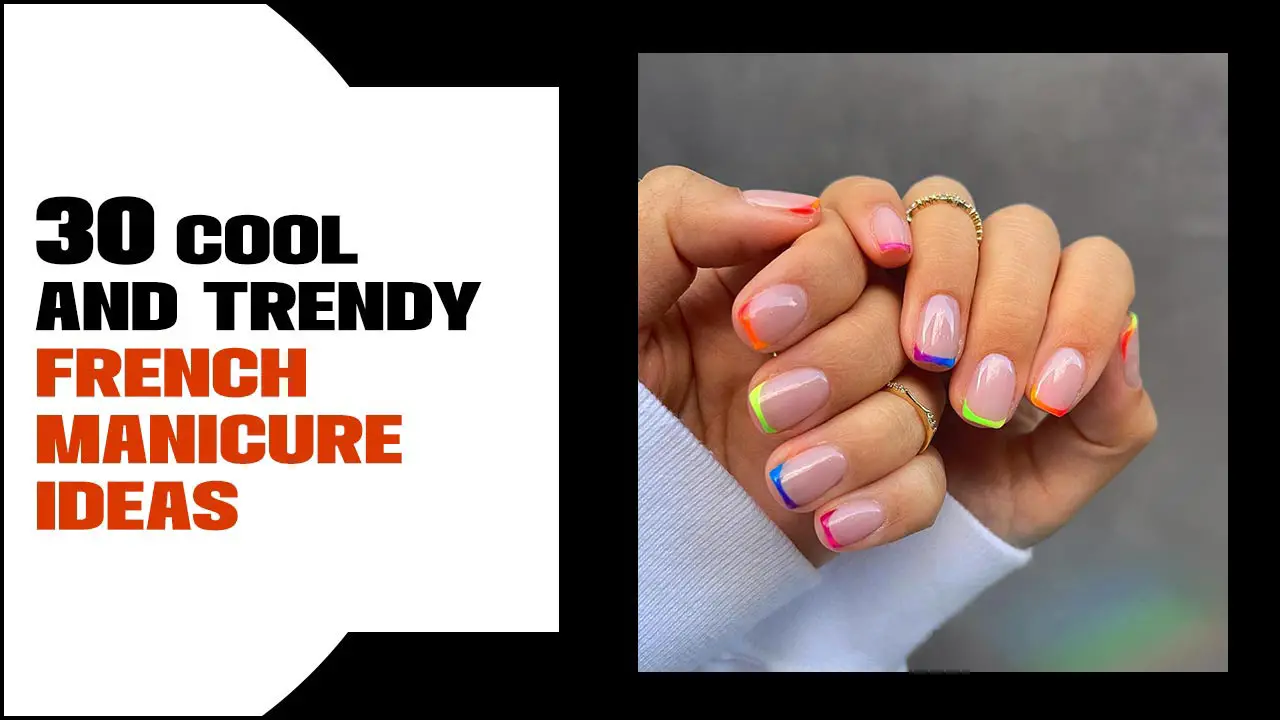Learn how to create gorgeous fall leaf nail designs with simple, step-by-step tutorials perfect for beginners. Get pro tips and must-have tools to achieve stunning seasonal manicures that are both stylish and fun to do yourself at home.
The crisp air, the cozy sweaters, and the vibrant foliage – fall is a time of beautiful change, and your nails can reflect that magic! If you’ve ever admired intricate fall leaf nail art and thought, “I could never do that,” think again! We’re here to show you how to capture the essence of autumn on your fingertips with designs that are surprisingly easy and utterly charming. Get ready to embrace the season with a manicure that’s as warm and inviting as a pumpkin spice latte. Let’s dive into making your nails a canvas for the most delightful fall leaves!
Why Fall Leaves Are the Ultimate Seasonal Nail Design
Fall leaves are more than just a pretty picture; they represent a whole mood. Think about the way the leaves turn – a breathtaking blend of reds, oranges, yellows, and browns. This natural palette translates perfectly to nail art, instantly giving your manicure a seasonal vibe. They’re versatile too! You can go for a full-on forest floor scene or a single, delicate leaf accent. Plus, mastering a few fall leaf techniques will open doors to countless other nature-inspired designs. It’s an achievable way to get creative and feel connected to the changing season.
The Essential Toolkit for Your Fall Leaf Manicure
Before we get our hands (and nails!) dirty, let’s gather our supplies. Don’t worry if you don’t have a pro nail kit; most of these items are readily available at drugstores or online.
Here’s what you’ll need:
- Base Coat: Protects your natural nails and helps polish adhere better.
- Top Coat: Seals your design and adds a glossy finish, making your art last longer.
- Nail Polish Colors: Think autumnal shades like deep reds, burnt oranges, mustard yellows, earthy browns, and forest greens. A creamy white or nude can be great for a background or for creating lighter leaf elements.
- Dotting Tools: These have small metal balls at the end, perfect for creating dots and small details like leaf veins or the base for a leaf shape.
- Thin Nail Art Brush: A fine-tipped brush is crucial for drawing delicate lines, veins, and refining leaf shapes. Look for synthetic bristles for easy cleaning!
- Sponge (Optional but Recommended): A clean makeup sponge or a specific nail art sponge can be used for creating a gradient background or a textured effect.
- Nail Polish Remover and Cotton Swabs: For cleaning up any mistakes and tidying the edges.
- Tweezers (Optional): Handy for picking up small embellishments if you decide to add glitter or tiny gems.
Having the right tools can make a huge difference. For example, a good quality nail art brush set can offer various tip sizes for different effects, from super fine lines to slightly thicker strokes.
Beginner-Friendly Fall Leaf Nail Design Tutorials
Let’s get creative! These tutorials are designed for easy execution, even if you’re new to nail art.
Tutorial 1: The Simple Leaf Stamp
This is a fantastic way to get a clean leaf shape with minimal freehand effort.
- Prepare Your Nails: Start with clean, dry nails. Apply a layer of base coat and let it dry completely.
- Choose Your Base Color: Paint your nails with your desired background color. A creamy beige, a soft grey, or even a deep, moody blue works beautifully. Let this coat dry thoroughly – this is crucial to prevent smudging later.
- Stamp Your Leaf: Take a contrasting polish color (like a deep red or burnt orange). Apply a small amount of this polish onto a clean surface (like a metallic stamper shield or a piece of foil).
- Load Your Stamper: Roll your stamper head over the polish to pick it up.
- Stamp onto the Nail: Gently press the stamper onto your nail where you want the leaf to appear. A light, even pressure is key!
- Add Details (Optional): Once the stamped leaf is dry, use a dotting tool or a very fine brush with a darker brown or black polish to add a simple vein line down the center.
- Seal the Deal: Apply a layer of top coat to protect your design and add shine.
Tutorial 2: The Gradient Leaf Effect
This method uses a sponge to create a beautiful, blended background that mimics the stunning colors of fall foliage.
- Prep and Base: Apply base coat, then paint your nails with a light color like nude or creamy white. Let it dry completely.
- Create the Gradient: On a piece of paper or a non-porous surface, draw stripes of your fall colors – think yellow, orange, and red, blending them slightly where they meet.
- Sponge it On: Lightly dab a makeup sponge into the blended colors. Then, gently dabbing/stippling the sponge onto your nail, transfer the gradient. Repeat until you achieve the desired depth of color, reapplying polish to the sponge as needed.
- Refine Edges: Use a cotton swab dipped in nail polish remover to clean up any harsh lines around your cuticle and sidewalls.
- Add a Leaf Accent: Once the gradient is dry, use a dotting tool or a fine brush and a brown or dark red polish to draw a simple leaf shape on one or two nails, or even just a few scattered dots that suggest leaves.
- Top Coat: Apply a clear top coat to seal everything in.
Tutorial 3: The Hand-Painted Simple Leaf
For those who want to try a bit of freehand drawing, this is a great starting point.
- Base & Color: Apply base coat, then your chosen background color. Let it dry completely.
- Leaf Shape: Using a fine nail art brush and a rich brown or deep red polish, carefully paint a simple tear-drop or oval shape onto your nail. Don’t worry about perfection; organic shapes are beautiful!
- Add Veins: While the leaf color is still slightly wet (or after it dries if you prefer), use a darker shade of the same color or a contrasting brown/black and your fine brush to draw a central vein line, and perhaps a couple of smaller lines branching off.
- Add Stem (Optional): Use the same brush and color to draw a small stem extending from the base of the leaf.
- Repeat or Embellish: You can add more leaves or maybe a few scattered gold glitter accents for a touch of sparkle.
- Final Seal: A protective layer of top coat, and you’re done!
Advanced Techniques for Fall Leaf Designs
Once you’ve got the basics down, you might be ready to explore some more intricate fall leaf designs. These build upon the beginner techniques but offer more depth and visual interest.
The Layered Leaf Effect
This technique creates a shadow or depth effect, making your leaves look more realistic.
- Start with a Base: Apply your base coat and a solid background color (e.g., a pale cream or light grey).
- Paint the First Leaf: On one or two accent nails, paint a simple leaf shape using a medium tone of your chosen leaf color (e.g., a mid-tone orange).
- Add a Darker Outline/Shadow: Once the first leaf is dry, use a darker shade of the same color (e.g., a deeper rust or burnt orange) and a very fine brush to outline the edges of the leaf. You can also add a slightly darker shade subtly on one side of the leaf to mimic shade.
- Add Lighter Highlights: With a lighter shade of your leaf color or even a touch of yellow/beige, use the fine brush to add a few subtle highlights on the opposite side of the shadow, making the leaf appear more dimensional.
- Veins: Add delicate veins using a dark brown or black polish.
- Top Coat: Seal your masterpiece with a top coat.
The Mixed Media Approach: Leaves with Glitter & Gems
Adding a little sparkle can elevate your fall leaf design from cute to glamorous.
- Create Your Leaf Design: Follow any of the above tutorials to paint your fall leaves.
- Apply Glitter: While the leaf polish is still slightly wet, you can gently sprinkle a fine gold or bronze glitter over the leaf, concentrating it on the edges or a specific section. Alternatively, after the leaf is dry, you can paint a thin line of top coat where you want glitter and carefully apply it with a fine brush or toothpick.
- Add Gems: For a more decadent look, carefully place small nail gems or rhinestones onto the nail, perhaps at the base of a leaf or scattered around. Use a bit of top coat or a specialized nail glue to adhere them. Tweezers are incredibly helpful here!
- Seal Everything: Apply a generous layer of top coat, being careful not to dislodge any gems. You might need two layers of top coat to ensure gems are well-encased and smooth.
Adding subtle glitter can enhance the autumnal feel. A fine gold or coppery glitter can mimic the shimmer of fallen leaves in the sun.
Color Palettes for Stunning Fall Leaf Nails
The key to a believable and beautiful fall leaf design is a rich, warm color palette. Don’t be afraid to mix and match!
Classic Fall Foliage
| Leaf Color | Background Suggestion | Detail/Vein Color |
|---|---|---|
| Deep Red (like Maple) | Creamy White or Light Beige | Dark Brown or Black |
| Burnt Orange (like Oak) | Soft Grey or Mustard Yellow | Dark Brown or Deep Red |
| Golden Yellow (like Aspen) | Earthy Brown or Forest Green | Dark Brown or Black |
| Rich Brown (like Walnut) | Mustard Yellow or Cream | Black or Dark Red |
Autumnal Moods
Beyond the classic reds and oranges, consider these mood-setting palettes:
- Muted Earth Tones: Olive green, terracotta, deep rust, and a sandy beige. Perfect for a subtle, sophisticated look.
- Jewel-Toned Autumn: Think deep plum, sapphire blue, emerald green paired with metallic gold accents. This is for a more dramatic, festive feel.
- Warm & Cozy: Shades of pumpkin spice, cinnamon, caramel, and a creamy latte. Ideal for a comforting, inviting manicure.
Experimentation is key! Don’t hesitate to blend colors or create your own unique autumnal shades.
Maintaining Your Fall Leaf Manicure
Once your gorgeous fall leaf nails are complete, you’ll want them to last. A little TLC goes a long way!
- Be Gentle: Avoid using your nails as tools. Don’t scrape, pry, or pick at anything.
- Moisturize: Keep your hands and cuticles hydrated with cuticle oil and hand cream. Dry skin can lead to polish chipping. A good cuticle oil, like those containing Vitamin E or jojoba oil, nourishes the skin around your nails.
- Gloves are Your Friend: Wear gloves when doing household chores, especially washing dishes or using cleaning chemicals. These can strip the polish and dull the shine.
- Refresh Your Top Coat: Every few days, consider applying an extra layer of top coat. This can help seal in the design and add back some of the shine, extending the life of your manicure.
For optimal nail health, remember that allowing your nails to breathe between manicures is also important. Consider using a nail strengthener, especially if you have brittle nails. The U.S. Food & Drug Administration (FDA) provides guidelines on cosmetic product safety, reminding consumers to be aware of ingredients and potential reactions. While nail polish is generally safe, always discontinue use if irritation occurs.
Frequently Asked Questions (FAQ)
Q1: What kind of nail polish is best for nail art?
For nail art, especially fine details, polishes with a good consistency work best. Cream finishes are generally easier to work with than glitters or metallics for beginners. Nail art polishes with thinner brushes are also incredibly helpful for detailed work.
Q2: How do I prevent smudging my nail art?
The most important thing is patience! Ensure each layer of polish is completely dry before adding the next. Avoid touching your nails for at least 15-20 minutes after applying the final top coat, and even longer if possible, before engaging in strenuous activities with your hands.
Q3: Can I use regular makeup brushes for nail art?
Yes, you can! Clean, small, synthetic makeup brushes can be repurposed for stippling colors or creating texture effects. Just make sure they are thoroughly cleaned with nail polish remover after use to avoid contamination.
Q4: My nail art looks messy. How can I clean up the edges?
A small, flat brush (like a concealer brush or a clean-up brush specifically for nails) dipped in nail polish remover is your best friend. Gently sweep it around the cuticle and sides of your nail to create crisp, clean lines. Work slowly for the best results.
Q5: How many leaves should I paint on my nails?
This is entirely up to your personal style! You can go for a full accent nail with multiple leaves, have a single leaf on just one nail, or scatter small leaf shapes across all your fingers. Less is often more for beginners, focusing on one or two detail nails might be easier.
Q6: What if I don’t have a dotting tool?
No problem! A toothpick can work as a basic dotting tool for small dots or creating simple leaf shapes. The rounded end is best for dots, and the pointed end can be used for finer details.
Q7: How long should fall leaf nail designs last?
With proper application, including a good base and top coat, and careful wear (using gloves for chores!), your fall leaf nail designs can last anywhere from 5 to 10 days. Refreshing your top coat every few days can help extend this.
Embrace the Beauty of Fall on Your Fingertips
Creating fall leaf nail designs is a wonderful way to express your creativity and seasonal spirit. We’ve covered everything from gathering your tools and mastering beginner-friendly techniques to exploring more advanced methods and choosing the perfect color palettes. Remember, nail art is all about having fun and letting your personality shine. Don’t be afraid to experiment, make a few mistakes (that’s what nail polish remover is for!), and discover what looks best on you. With these tips and tutorials, you’re well on your way to rocking some of the most genius and must-have seasonal nail designs. So go ahead, grab your polishes, and let the autumn magic begin on your nails! Happy painting!




